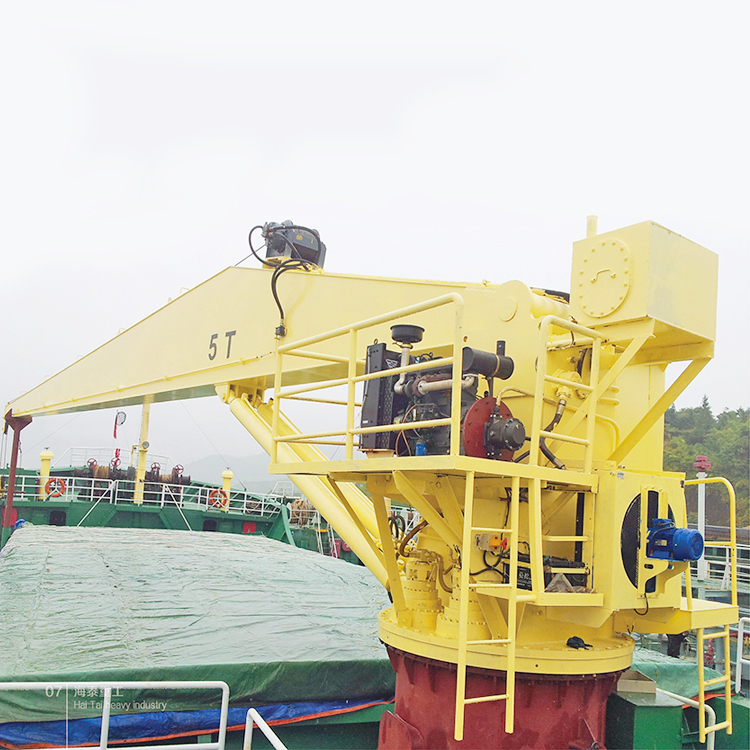Deck cranes are essential pieces of equipment on ships, used for loading and unloading cargo. Ensuring their safe operation is critical to prevent accidents and injuries. Here are some key safety measures and features associated with deck cranes:
Regular Inspections and Maintenance:
Routine Checks: Regular inspections should be conducted to identify any wear and tear, corrosion, or damage to the crane components.
Scheduled Maintenance: Adhering to a maintenance schedule ensures that all parts are in good working condition and any potential issues are addressed promptly.
Load Testing:
Periodic Load Tests: Cranes should undergo load testing to verify their lifting capacity and ensure they can handle the maximum rated load safely.
Overload Protection: Systems should be in place to prevent the crane from lifting loads beyond its rated capacity.
Safety Devices:
Limit Switches: These prevent the crane from moving beyond its designed range of motion, avoiding potential collisions or structural damage.
Emergency Stop Buttons: Easily accessible emergency stop buttons allow operators to halt crane operations immediately in case of an emergency.
Anti-Two Block Devices: These prevent the hook block from being drawn into the boom tip, which can cause damage or accidents.
Operator Training:
Qualified Personnel: Only trained and certified operators should be allowed to operate deck cranes.
Ongoing Training: Regular training sessions should be conducted to keep operators updated on safety protocols and operational procedures.
Safe Operating Procedures:
Pre-Operation Checks: Operators should perform pre-operation checks to ensure all controls and safety devices are functioning correctly.
Clear Communication: Effective communication between the crane operator and ground personnel is crucial to coordinate movements and ensure safety.
Weather Considerations: Operations should be halted in adverse weather conditions, such as high winds or heavy seas, which can affect crane stability and safety.
Load Handling:
Proper Rigging: Ensure that loads are properly rigged and balanced to prevent shifting or falling during lifting operations.
Safe Working Load (SWL): Never exceed the crane’s SWL, and always consider the dynamic forces that can affect the load during lifting.
Safety Signage and Barriers:
Warning Signs: Clearly visible warning signs should be placed around the crane operating area to alert personnel of potential hazards.
Physical Barriers: Use barriers to keep unauthorized personnel out of the crane operating zone.
Emergency Preparedness:
Emergency Procedures: Have clear emergency procedures in place, including evacuation plans and first aid measures.
Rescue Equipment: Ensure that appropriate rescue equipment is available and accessible in case of an accident.
Documentation and Record-Keeping:
Maintenance Logs: Keep detailed records of all inspections, maintenance, and repairs.
Operation Logs: Maintain logs of crane operations, including any incidents or near-misses, to help identify and mitigate risks.
By adhering to these safety measures, the risks associated with deck crane operations can be significantly reduced, ensuring a safer working environment for all personnel involved.

Post time: Sep-14-2024







